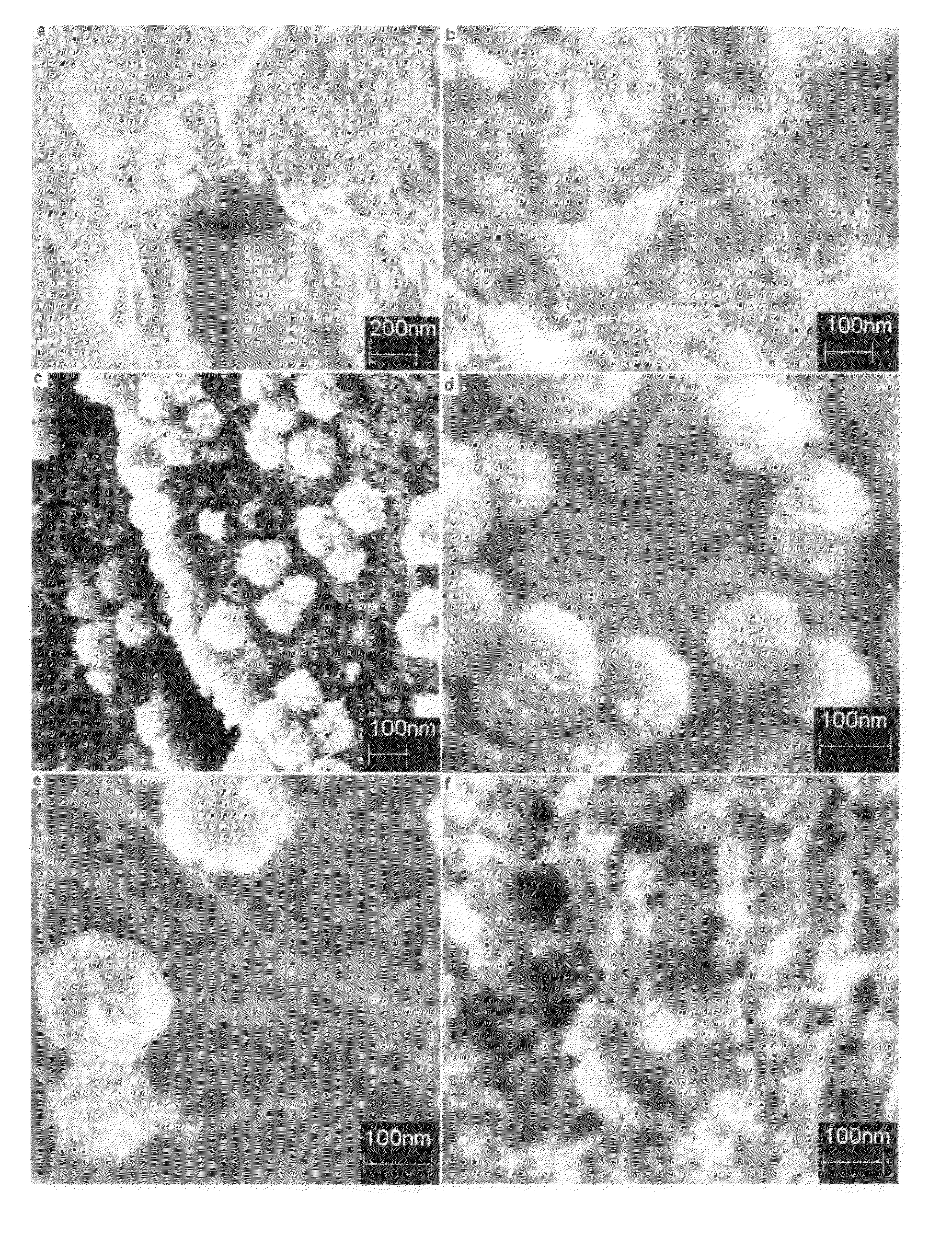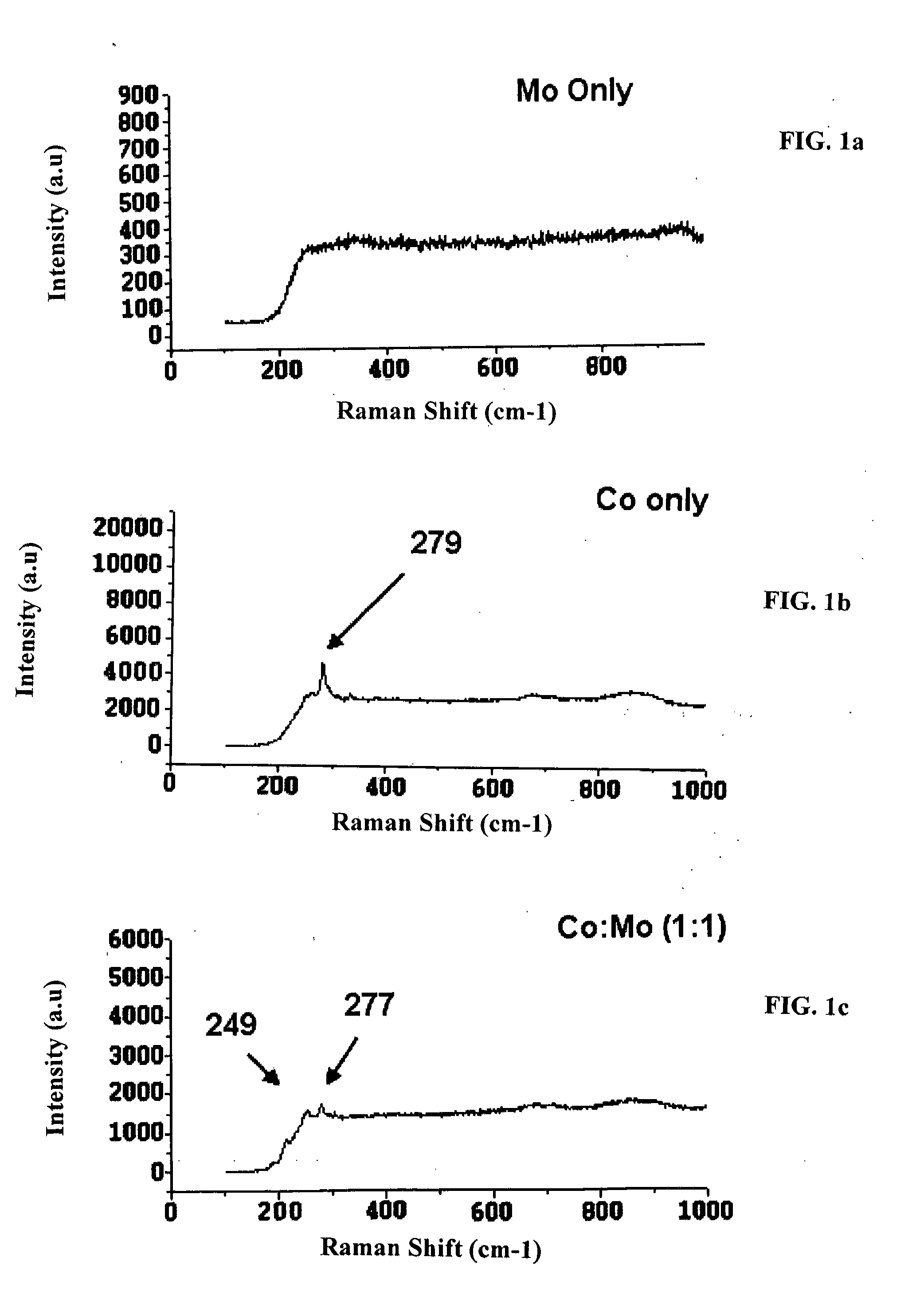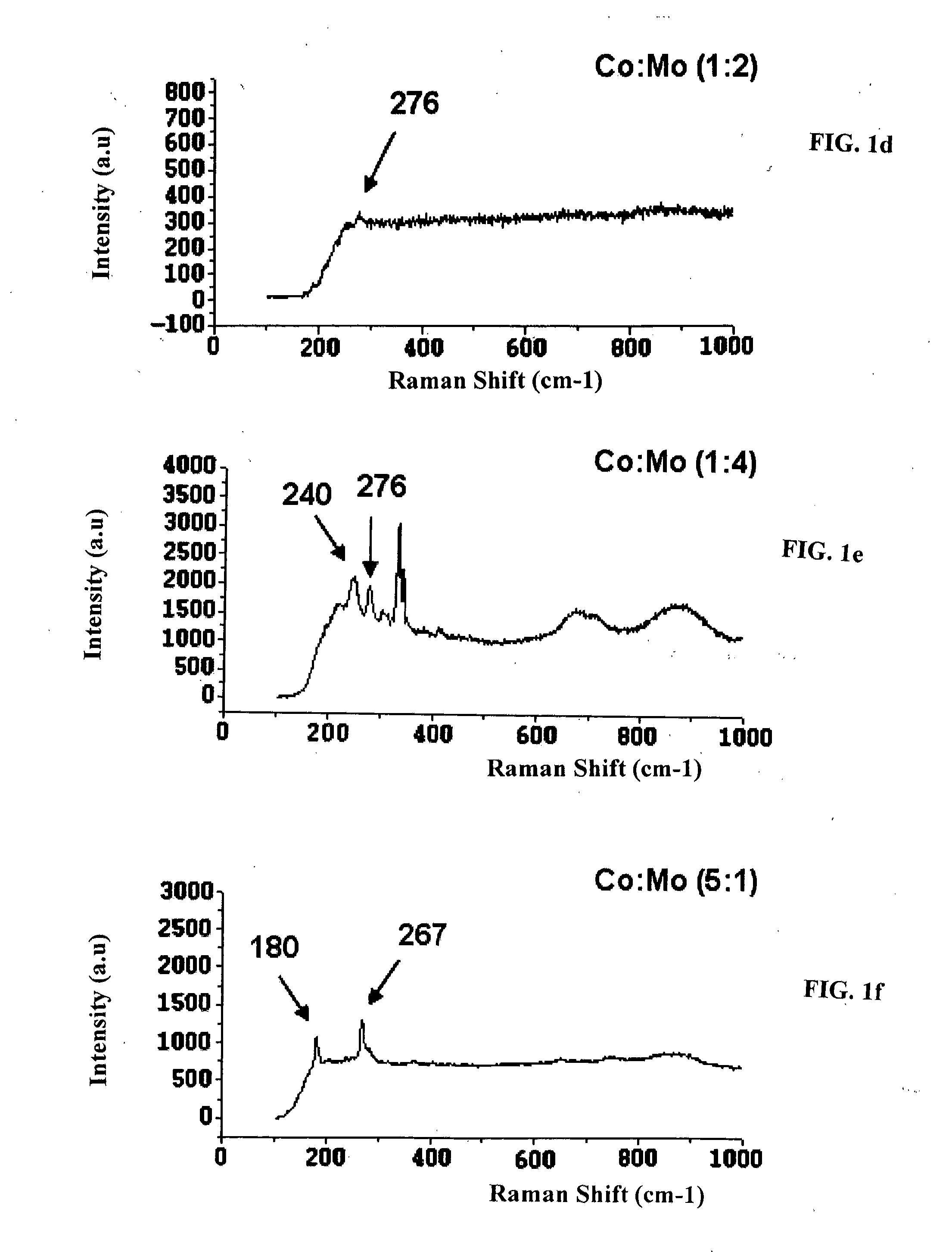Single Wall Carbon Nanotubes By Atmospheric Chemical Vapor Deposition
a carbon nanotube and chemical vapor deposition technology, applied in the field of systems and methods for producing carbon nanotubes, can solve the problems of high scale-up production costs of swnts, high cost of mwnts, and high cost of hipco nanotubes
- Summary
- Abstract
- Description
- Claims
- Application Information
AI Technical Summary
Benefits of technology
Problems solved by technology
Method used
Image
Examples
example 1
[0058]SWNTs were synthesized in powder form using carbon monoxide (CO) as the carbon source and magnesium oxide (MgO) as the catalyst support material. A detailed parametric study of the various factors influencing the growth of the SWNTs was performed. More particularly, the effects of catalyst type, bimetallic catalyst composition, growth temperature, and flow rate and partial pressure of the carbon source, were investigated. In general, the SWNT growth process consisted of three stages, namely: catalyst / support preparation, catalyst / support calcination and reduction, and finally, SWNT growth followed by purification.
Catalyst Preparation:
[0059]Sample catalysts / supports were prepared by a wet mixing and combustion synthesis method. Magnesium nitrate hexahydrate [Mg(NO3).6H2O], cobalt nitrate hexahydrate [Co(NO3).6H2O], ammonium heptamolybdate [(NH4)6Mo7O24.4H2O] and citric acid (all from Sigma Aldrich) were mixed with enough distilled water to form a clear solution. Part of the sol...
PUM
 Login to View More
Login to View More Abstract
Description
Claims
Application Information
 Login to View More
Login to View More - R&D
- Intellectual Property
- Life Sciences
- Materials
- Tech Scout
- Unparalleled Data Quality
- Higher Quality Content
- 60% Fewer Hallucinations
Browse by: Latest US Patents, China's latest patents, Technical Efficacy Thesaurus, Application Domain, Technology Topic, Popular Technical Reports.
© 2025 PatSnap. All rights reserved.Legal|Privacy policy|Modern Slavery Act Transparency Statement|Sitemap|About US| Contact US: help@patsnap.com



